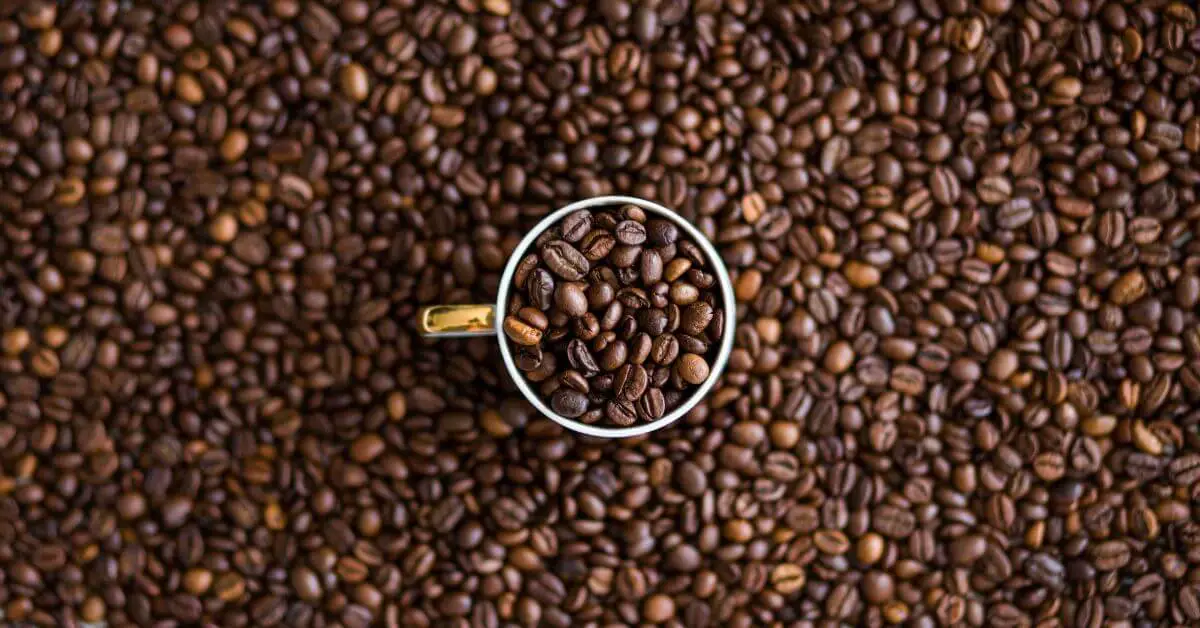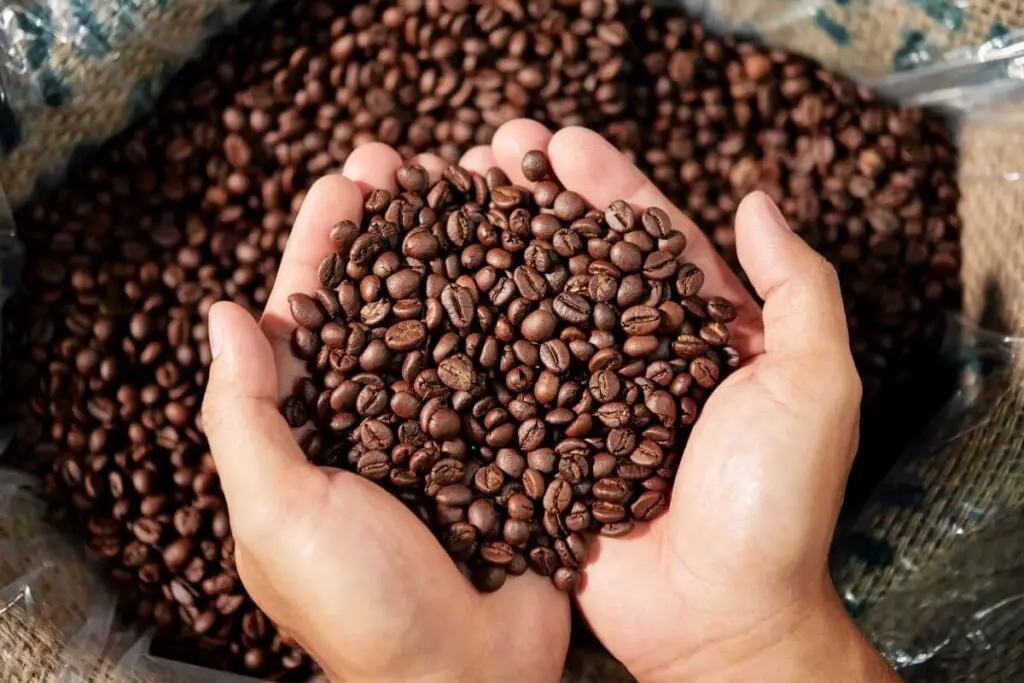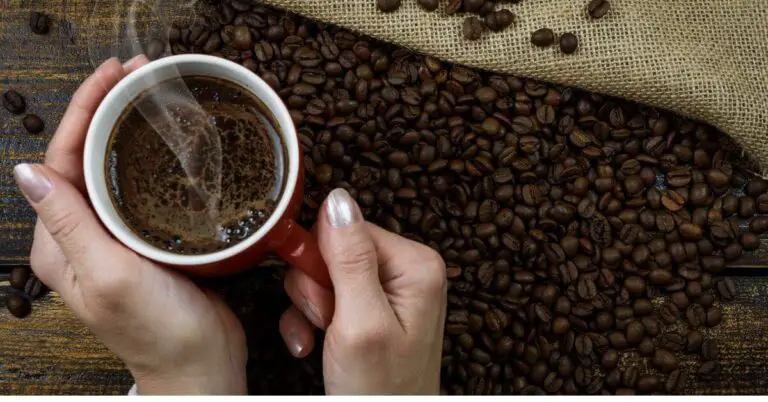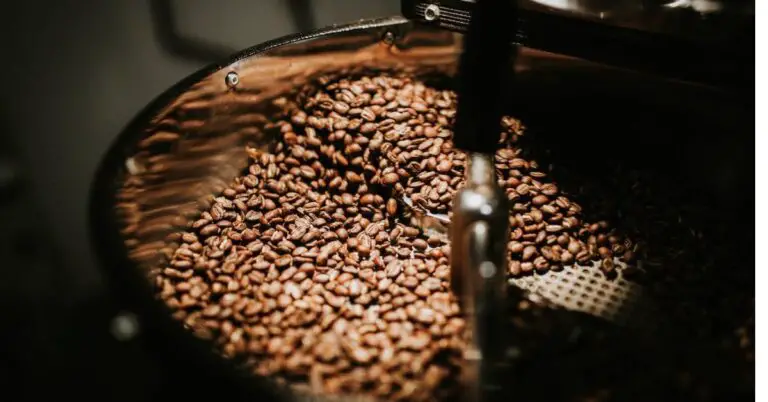Difference Between Espresso Beans And Coffee Beans & Their Ultimate Flavors

Coffee is more than just a drink; it’s a ritual for millions around the world. From the aroma of freshly brewed coffee to the comforting warmth of a mug in hand, the experience is cherished by many. But within this beloved beverage lies a world of diversity, particularly when it comes to the types of beans used in brewing. Among these, espresso beans and coffee beans often spark curiosity and confusion.
So, what’s the difference between espresso beans and coffee beans? This article will explore the unique characteristics, roasting processes, and brewing methods associated with each, shedding light on how these distinctions affect flavor, aroma, and your overall coffee experience. Whether you’re a casual drinker or a dedicated connoisseur, understanding these differences can enhance your appreciation for this fantastic beverage. Let’s dive into the fascinating world of coffee!

What Are Coffee Beans?
Coffee beans are the seeds of the Coffea plant and are the primary ingredient in making coffee. These beans come in several varieties, with two of the most popular being Arabica and Robusta. Each type offers distinct flavors and characteristics, contributing to the wide range of coffee experiences available.
A. Definition and Types of Coffee Beans
- Arabica: Arabica beans are known for their smooth, mild flavor and sweet undertones. They are generally grown at higher altitudes, which contributes to their complex taste profile. With a lower caffeine content compared to Robusta, Arabica beans are often favored by coffee connoisseurs for their nuanced flavors and aromatic qualities.
- Robusta: Robusta beans, on the other hand, are known for their strong, bold flavor and higher caffeine content. They are typically grown at lower altitudes and are more resilient to pests and diseases, making them easier to cultivate. This variety tends to have a more bitter taste, which can be attributed to its higher caffeine levels. Robusta is often used in espresso blends to add a rich, creamy texture and enhance the overall body of the coffee.
B. Common Uses and Brewing Methods
Coffee beans can be brewed using various methods, each bringing out different flavors and characteristics. Some of the most common brewing techniques include:
- Drip Coffee: This popular method involves pouring hot water over ground coffee, allowing gravity to draw the water through the grounds and into a carafe. Drip coffee makers are widely used at home and in offices due to their convenience.
- French Press: The French press method involves steeping coarsely ground coffee in hot water for several minutes before pressing down a plunger to separate the grounds from the brewed coffee. This method results in a rich, full-bodied cup, allowing the oils and flavors of the beans to shine through.
- Cold Brew: Cold brew coffee is made by steeping coarsely ground coffee in cold water for an extended period, usually 12 to 24 hours. The result is a smooth, less acidic coffee concentrate that can be diluted with water or milk for a refreshing drink, especially in warmer months.
Understanding the different types of coffee beans and their brewing methods allows you to appreciate the wide spectrum of flavors and aromas that coffee has to offer.
What Are Espresso Beans?
Espresso beans are not a distinct type of bean but rather a term that refers to coffee beans specifically roasted and ground for making espresso. The process of creating espresso involves unique characteristics that set it apart from standard coffee preparation methods.
A. Definition and Characteristics
Espresso is a concentrated coffee beverage brewed by forcing hot water through finely-ground coffee under high pressure. The beans used for espresso can be either Arabica or Robusta, but they are typically roasted to a darker level to bring out a rich, intense flavor. The roasting process enhances the natural oils in the beans, contributing to a thicker crema (the golden, foamy layer on top of a freshly brewed espresso) that adds to the espresso’s creamy texture.
B. Roasting Process
- Darker Roast Profile: Espresso beans are usually roasted darker than standard coffee beans. This roasting style brings out deeper flavors, often resulting in chocolatey or caramel notes. The darker roast also helps reduce the acidity of the coffee, making for a smoother taste that many espresso lovers enjoy.
- Impact on Flavor and Aroma: The roasting process significantly influences the flavor and aroma of espresso. As the beans roast longer, they develop a more robust and complex flavor profile. This process creates a balance between sweetness and bitterness, which is essential for a well-rounded espresso shot.
C. Specific Uses and Brewing Methods
Espresso is brewed using specific methods that highlight its unique characteristics:
- Espresso Machine: The most common method for brewing espresso is using an espresso machine. This device forces hot water through the finely-ground coffee at high pressure, typically around 9 bars. This quick brewing time (about 25-30 seconds) extracts the concentrated flavors and aromas from the beans, resulting in a shot of rich espresso.
- Moka Pot: The Moka pot, also known as a stovetop espresso maker, is a popular alternative for brewing espresso at home. It uses steam pressure to push hot water through the coffee grounds, producing a strong, espresso-like coffee. While it may not replicate the same pressure as an espresso machine, the Moka pot can still deliver a robust flavor that many coffee enthusiasts appreciate.
Understanding what espresso beans are and how they differ from regular coffee beans helps deepen your appreciation for this beloved coffee preparation method.

Key Differences Between Espresso Beans and Coffee Beans
While espresso beans and regular coffee beans share the same origins, several key differences set them apart. Understanding these distinctions will enhance your coffee experience and help you choose the right beans for your brewing preferences.
A. Roasting Levels
- Espresso Beans: Darker Roast
Espresso beans are typically roasted darker than regular coffee beans. This darker roast enhances their bold flavors and creates a rich, intense brew. The roasting process caramelizes the sugars in the beans, contributing to the complex flavors that characterize a great shot of espresso. - Coffee Beans: Variety in Roast Levels
Regular coffee beans can be roasted to various levels, ranging from light to dark. Light roasts often highlight the beans’ natural flavors and acidity, while medium and dark roasts can bring out different flavor notes, such as chocolate or nuts. This variety allows for a broader spectrum of taste experiences in brewed coffee.
B. Grind Size
- Espresso: Fine Grind
For espresso, the beans are ground to a fine consistency. This fine grind is essential for the brewing process, as it increases the surface area of the coffee, allowing for a quick and effective extraction of flavors when hot water is forced through the grounds. - Coffee: Various Grind Sizes for Different Brewing Methods
Regular coffee can be ground to different sizes depending on the brewing method used. For instance, a coarser grind is ideal for a French press, while a medium grind works well for drip coffee. This flexibility in grind size allows for diverse brewing options and flavor profiles.
C. Brewing Time and Pressure
- Espresso: Short Brewing Time Under Pressure
Espresso is brewed quickly, typically within 25 to 30 seconds, using high pressure. This quick extraction under pressure captures the concentrated flavors and oils from the finely ground coffee, resulting in a rich and bold espresso shot. - Coffee: Longer Brewing Time, No Pressure
In contrast, regular coffee brewing methods generally take longer and do not involve pressure. For example, a drip coffee maker may take several minutes to brew a full pot. This longer brewing time allows for a different flavor extraction process, leading to a lighter, more nuanced cup of coffee.
D. Flavor Profile
- Espresso: Bold, Concentrated Flavor
The unique brewing process and darker roast of espresso result in a bold, concentrated flavor. Espresso has a thicker mouthfeel and a rich crema on top, giving it a distinct texture and aroma. Many coffee enthusiasts appreciate the intensity and complexity of flavors found in espresso. - Coffee: Diverse Flavors Based on Origin and Roast
Regular coffee offers a broader range of flavors, often influenced by the bean’s origin and the roasting process. From fruity and floral notes to chocolatey and nutty undertones, the flavor profiles of brewed coffee can vary significantly, providing a diverse tasting experience.
By understanding these key differences, you can make more informed choices about your coffee and espresso experiences, leading to a more satisfying brew every time.

Misconceptions About Espresso and Coffee Beans
As coffee culture continues to evolve, several misconceptions about espresso and coffee beans have emerged. Understanding the truth behind these myths can help you appreciate your coffee even more.
A. Common Myths
- All Coffee Beans Can Be Used for Espresso
One common misconception is that any type of coffee bean can be used to make espresso. While technically, you can brew espresso with any coffee beans, using the right type enhances the overall experience. Espresso is best made with beans that have been specifically roasted for this purpose, typically darker varieties. These beans are chosen for their flavor profiles and roasting levels, which contribute to the boldness and richness of espresso. - Espresso Is a Type of Coffee
Another misconception is that espresso is a type of coffee. In reality, espresso is a brewing method rather than a specific type of coffee. While espresso is made from coffee beans, it differs from traditional brewed coffee in terms of preparation, grind size, and flavor concentration. This distinction is crucial for understanding the various ways to enjoy coffee and espresso.
By debunking these misconceptions, you can gain a clearer perspective on the world of coffee, enabling you to explore new flavors and methods with confidence.
Conclusion
In summary, understanding the difference between espresso beans and coffee beans is essential for any coffee enthusiast looking to deepen their appreciation for this beloved beverage. We explored the unique characteristics of coffee beans, including the prominent types, common brewing methods, and how they differ from espresso beans.
Espresso beans, typically roasted darker and ground finely, are specifically designed for a brewing method that highlights their bold and concentrated flavors. Meanwhile, regular coffee beans come in various roast levels and can be brewed using multiple techniques, resulting in a diverse array of flavor profiles.
Choosing the right beans for your desired coffee experience can significantly impact your enjoyment of coffee, whether you prefer a rich espresso shot or a smooth cup of drip coffee. So, don’t hesitate to experiment with different beans, roasts, and brewing methods to discover your perfect cup.
Frequently Asked Questions On Difference Between Espresso Beans And Coffee Beans
What is the difference between coffee and espresso?
Coffee:
Brewed by steeping coarsely ground coffee beans.
Typically made using drip coffee makers, pour-over methods, or French press.
Longer brewing time, resulting in a larger volume of liquid.
Generally has a milder flavor and lower concentration of coffee solids.
Espresso:
Brewed by forcing hot water through finely ground coffee under high pressure.
Made using an espresso machine.
Shorter brewing time, producing a small, concentrated shot of coffee.
Intense and robust flavor with a higher concentration of coffee solids.
Can I use coffee beans for espresso?
Espresso beans are the same as regular coffee beans; the difference lies in the roast and grind quality. Any coffee bean can be used for espresso as long as it is brewed using an espresso machine. The only important factor is the brewing technique, not the type of bean.
Are Espresso Beans The Same As Coffee Beans?
No, espresso beans are not the same as coffee beans. While they are both coffee beans, the difference lies in the roast quality, grind quality, and taste. Espresso beans are specially roasted and ground to suit the brewing technique of an espresso machine.
Can You Use Normal Coffee Beans For Espresso?
Espresso beans are the same as regular coffee beans; the difference lies in the roast and grind quality. Any coffee bean can be used for espresso as long as it is brewed using an espresso machine. The only important factor is the brewing technique, not the type of bean.







